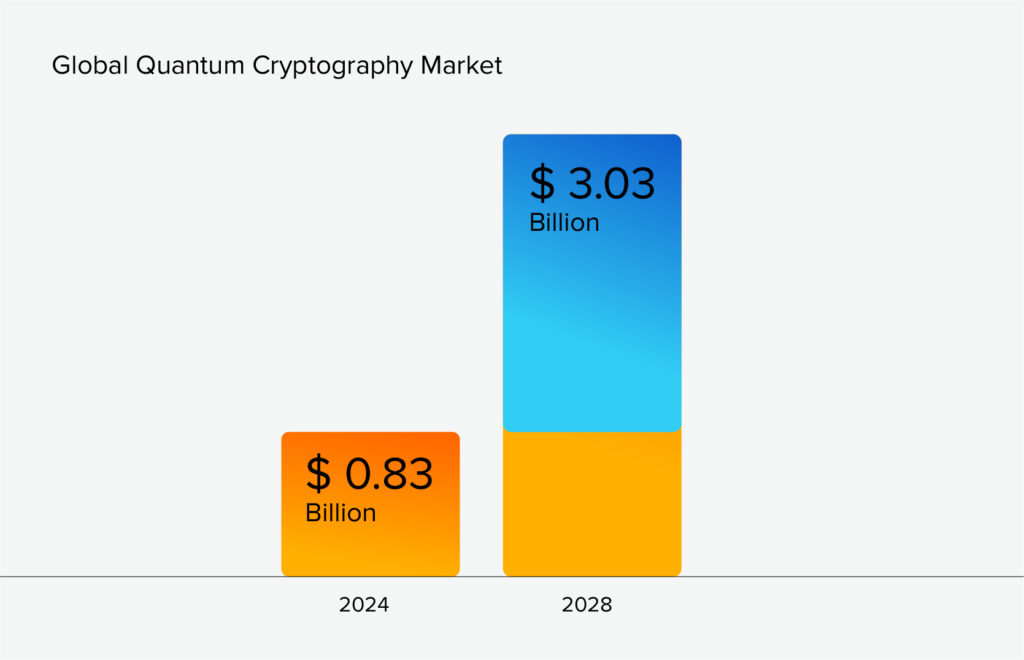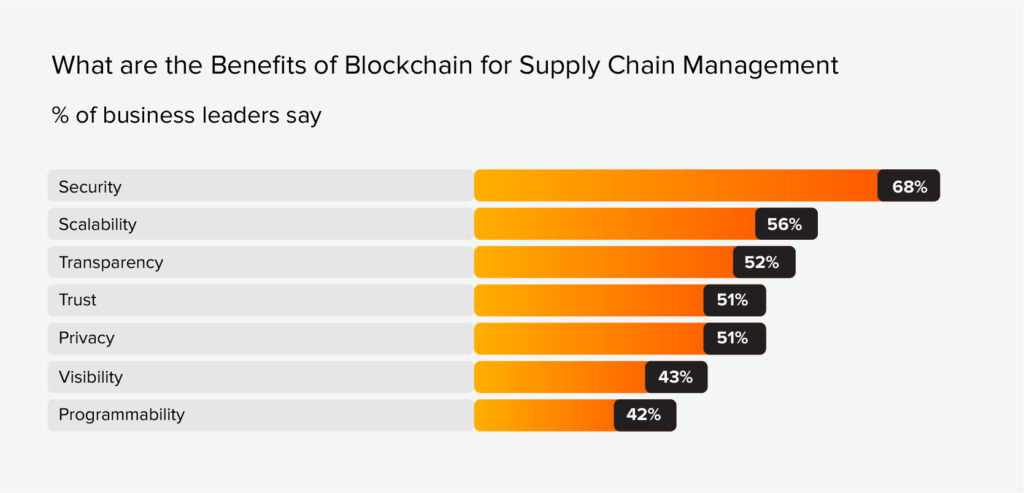Generative AI, no-code platforms, and quantum cryptography are changing the way businesses work in 205. Businesses also focus on sustainability, hyper-personalization, and data-driven decision-making to meet evolving market demands. These advancements can help businesses accelerate their growth, enhance adaptability, and maintain a competitive edge in an increasingly digital-first world.
Let’s overview the main digital transformation trends for 2025 and find out how companies can benefit from their adoption.
Digital Transformation Trends for 2025
At Svitla Systems, we help your business navigate upcoming 2025 trends, building a better, more efficient future. Let's look at what's driving these changes.
Trend #1. Generative AI (GenAI) for Content Creation
GenAI transforms how we create content, develop designs, and deliver customer support through its ability to process vast datasets and generate targeted, innovative output. AI leverages advanced language models (LLMs) and neural networks to enhance innovation, efficiency, and customization in marketing, creative work, media, and programming. Innovative tools like ChatGPT and DALL-E 2 transform the way we generate content, making it faster and more personalized.
How to get started?
Integrate GenAI tools into your workflow to automate tasks, personalize marketing, and enhance creativity. For example, eBay implements Hugging Face's NLP models to enhance search functionality and suggestions. This enables the platform to deliver users a more personalized, optimized experience.
Trend #2. No-Code Platforms
No-code platforms are making digital transformation easier for everyone. They let customers create apps and automate tasks without technical skills. With the help of drag-and-drop tools, visual development, and pre-built components, anyone can create apps and automate tasks without coding.
How to get started?
Explore no-code platforms and try building simple apps to streamline tasks and improve processes.
For example, Razorpay's DataSync, a no-code data integration platform, helps businesses securely integrate payment and transaction data without technical expertise.
Trend #3. Quantum Cryptography
Quantum cryptography revolutionizes information protection by utilizing quantum physics principles for enhanced security protocols. This developing technology, known also as quantum encryption, will reshape digital security standards. As quantum computers advance, conventional encryption systems become obsolete, making quantum-resistant security essential.

Source: Research and Markets
How to get started?
Prepare for the quantum future by exploring quantum-safe security solutions. Companies like ID Quantique already provide quantum-resistant encryption for organizations looking to stay ahead of evolving cyber threats. Banks and financial institutions, in particular, should consider integrating quantum cryptography to ensure long-term data protection and compliance.
Trend #4. Edge Computing
Edge computing accelerates operational decision-making by handling data processing near the data origin, minimizing delays and boosting performance. This capability proves vital for IoT systems, instant analytics, and self-driving vehicles. Manufacturing, healthcare, transportation, and automotive sectors are currently deploying edge computing to streamline operations, track equipment status, and implement innovative automation solutions.
How to get started?
Identify areas where low-latency data processing is essential and explore edge computing solutions to improve responsiveness. For example, Farmobile, an agricultural tech startup, uses edge computing to analyze soil moisture, weather patterns, and machinery performance on-site. By enabling real-time insights, the company helps farmers optimize crop yields and reduce waste, driving more sustainable farming practices.
Trend #5. Sustainability
Environmental responsibility is emerging as a crucial focus in digital strategies, as organizations implement power-efficient solutions, decrease environmental impact, and practice sustainable data handling. Organizations can reduce ecological footprints using cloud services, sustainable power sources, and data-driven sustainability metrics while strengthening market position and complying with environmental regulations. Technology, production, commerce, and logistics sectors spearhead the transition to environmentally conscious practices.
How to get started?
Integrate sustainability goals into your digital strategy and adopt tech solutions that reduce environmental impact. For example, Patagonia, an outdoor apparel company, uses AI and data analytics for the following:
- Ensure their supply chain works efficiently
- Reduce waste
- Maintain ethical sourcing practices
Patagonia also has a "Worn Wear" program that helps customers reuse and recycle clothes. This shows how a company can do well in business while caring for the environment.
Trend #6. Blockchain for Supply Chains
In 2025, blockchain is becoming essential in supply chain management, not just for cybersecurity. Manufacturing sectors, particularly automotive, are implementing it to streamline operations and enhance workflow. With increasing digitalization, blockchain provides improved visibility and monitoring capabilities across supply networks.
The automotive blockchain market is expected to grow from $468 million in 2023 to $7.38 billion by 2032. Blockchain will also make logistics and shipping faster and safer for businesses.
How to get started?
Identify key supply chain challenges where blockchain could provide solutions, such as product traceability or enhanced security measures. Consider Ford's initiative to use blockchain for component tracking. By adopting blockchain, organizations can boost operational efficiency, strengthen consumer confidence, and thrive in today's digital landscape.

Source: SettleMint
Trend #7. Everything as a Service (XaaS)
XaaS influences business technology adoption by offering software, infrastructure, and other resources via cloud platforms. This model helps to enhance scalability, reduce operational expenses, and maintain market competitiveness without solid investments. Technology, banking, and healthcare sectors leverage XaaS to improve processes and foster innovation.
Organizations require adaptable and cost-effective solutions to manage evolving business landscapes. XaaS delivers cutting-edge technology access without additional IT burden, facilitating seamless growth and adaptation.
How to get started?
Identify operational areas where XaaS can streamline processes, like data storage or business intelligence. Consider how Netflix uses AWS (IaaS) for seamless content delivery to its global audience. XaaS enables companies to maintain efficiency, reduce costs, and prioritize core objectives.
Trend #8. Total Experience
Total Experience (TX) is transforming organizational approaches by combining Customer Experience (CX), User Experience (UX), Employee Experience (EX), and Multiexperience (MX). Organizations use data analytics, AI, and platform synchronization to deliver cohesive interactions that enhance engagement, satisfaction, and productivity. Banking, healthcare, and retail segments adopt TX to enhance customer retention and operational performance.
How to get started?
Connect TX with your organizational objectives and deploy technology that optimizes user and employee experiences. For example, Starbucks combines AI-based customization, mobile ordering systems, and staff development tools to deliver an integrated experience, and enhance customer loyalty and employee satisfaction.
Trend #9. Hyper-Personalization
Hyper-personalization transforms customer engagement, as companies deploy AI and data analytics to create individualized experiences. Through the integration of customer data platforms (CDPs), smart recommendation systems, and user behavior analysis, businesses can strengthen engagement, improve customer satisfaction, and increase conversion rates. Sectors including e-commerce, retail, tourism, hospitality, and financial services spearhead the movement toward personalized digital interactions.
How to get started?
Implement hyper-personalization by AI-powered analytics to personalize customer touchpoints, product suggestions, and promotional content. For instance, Stitch Fix, an online styling platform, evaluates customer style preferences, measurements, and reviews to deliver customized clothing recommendations, enhancing satisfaction and building customer loyalty.
Trend #10. Data-Driven Operations
Data-centric operations transform organizations, facilitate intelligent decision-making and workflow enhancement. Organizations can boost productivity, cut expenses, and strengthen risk assessment by implementing data storage systems, analytics platforms, and data visualization solutions. The industrial production sector, supply chains, banking, and medical services are spearheading the transition to data-focused approaches.
How to get started?
Implement analytics solutions to understand consumer patterns, monitor performance metrics, and streamline processes. For instance, Toast, a hospitality technology provider, employs data analytics to assist restaurateurs in enhancing stock control, price optimization, and guest relations, boosting operational excellence and revenue generation.
Conclusion
XaaS, edge computing, blockchain, and other trends mentioned above will be big players in the digital space in the coming years. Companies that get on board with these trends – whether using AI for content, getting personal with customers, or completely changing how they do things digitally – will have a real advantage as everything becomes increasingly online.
The key is to stay flexible, not fear innovations, and always look for ways to work smarter. With this approach, businesses can open up new doors and help create a more connected and exciting future.
Svitla Systems is here to assist you and help you navigate your digital journey to quantitative success. Contact us to get a comprehensive consultation!




